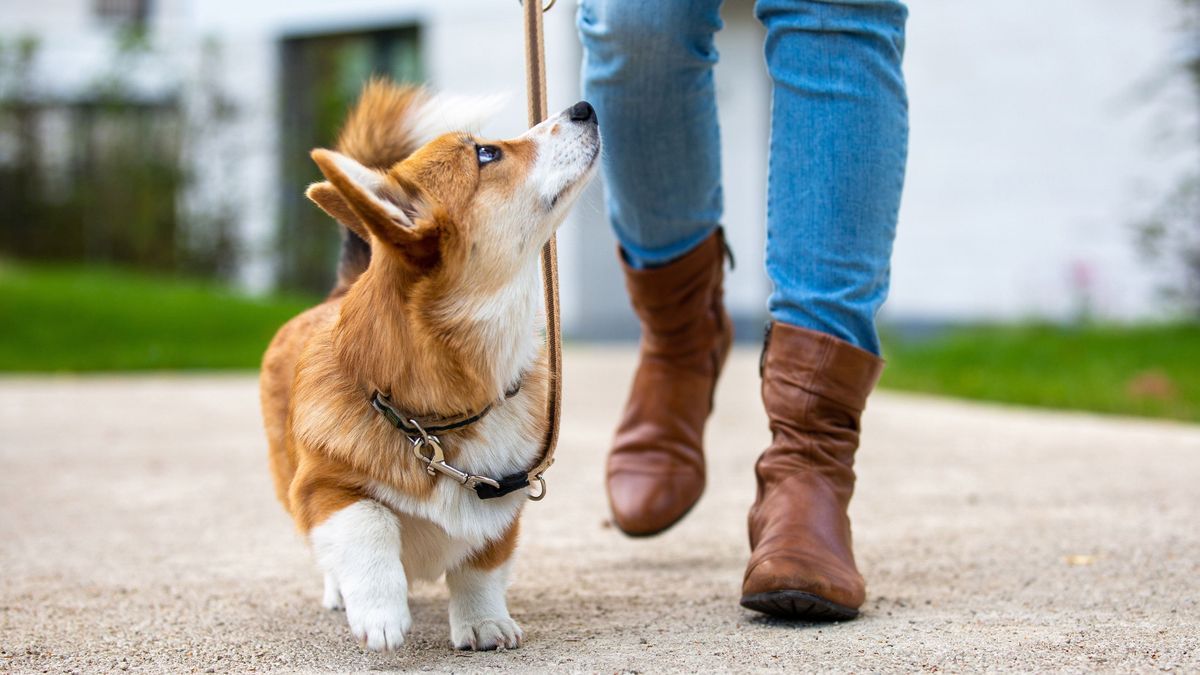
The domestication of dogs has changed the color of their eyes: they are lighter in their cousin the wolf but evolution has given them a brown tint that is more friendly and less threatening to a human.
“The iris color of dogs is darker than that of wolves, and this dark color positively affects humans’ perception of dogs“, says a study conducted by scientists from the Department of Animal Sciences at Japan’s Teikyo University.
Selection by males may have led to a preference for dark eyes
Humans would have naturally selected dogs with dark eyes, and this selective pressure would have favored animals whose eyes were “perceived as friendly and juvenile to humans“, according to this work published Wednesday in the scientific journal Royal Society Open Science.
The domestication of the dog, from the gray wolf, occurred gradually, during the period from -50,000 to -15,000 years ago.
Today, most canines associated with wolves have one eye with a light iris, tending towards yellow, and highlighting a dark pupil in the center.
Conversely, the eyes of dogs from around thirty breeds selected for the study have a large and dark iris, tending towards red, making it difficult to distinguish their pupil.
This difference would be of great importance in the exchange of glances between the human and his faithful companion. This exchange, which the dog knows how to use to attract the attention of its master, leads, for example, to the production of oxytocin, identical to that resulting from an exchange of glances between mother and child.
A study recently showed that this interaction is facilitated, in the case of dogs, by the development of facial muscles allowing them to modulate the expression of their gaze, unlike wolves.
Vulnerable and harmless
But why would a darker iris make a dog more lovable to a human? Teikyo researchers rely on studies applied to primates, and in particular humans, in which a dilated pupil is associated, for example, with more positive emotions than a contracted pupil.
More importantly, a large pupil would also be unconsciously associated with that of a juvenile being and therefore more vulnerable and harmless. As in children, whose pupil size decreases with age.
However, when a dog’s iris is very dark, and therefore indistinguishable from the pupil, humans have the impression of seeing a very large pupil. A dog with a dark iris would be perceived this way.as weak and needing to be protected“, according to the study.
The researchers tested their theory by presenting humans with images of twelve dogs, in two versions: one with dark eyes, one with light eyes.
Participants were asked to characterize the personality of each animal as more or less friendly and more or less juvenile. They were also asked if they would like to interact with, or even adopt, each dog. The operation was repeated with a second cohort of testers.
“Images of dogs with dark eyes were perceived as more friendly and juvenile“, concludes the study. But if this character facilitated interaction, it was not enough to arouse a desire for adoption.
The Teikyo University researchers acknowledge limitations to their study, such as that of “familiarity”, which would suggest that we prefer dogs with dark eyes simply because there are more of them. Or tests involving a limited number of dog species compared to all those existing.
“This is the first study to examine the difference in eye color between dogs and wolves“, specifies to AFP doctoral student Akitsugu Konno, first author. But “Factors Other Than Human Preference Could Contribute to Darker Eyes in Dogs“, he adds, hoping for other studies on the subject in order to “confirm the universality of the phenomenon”.
